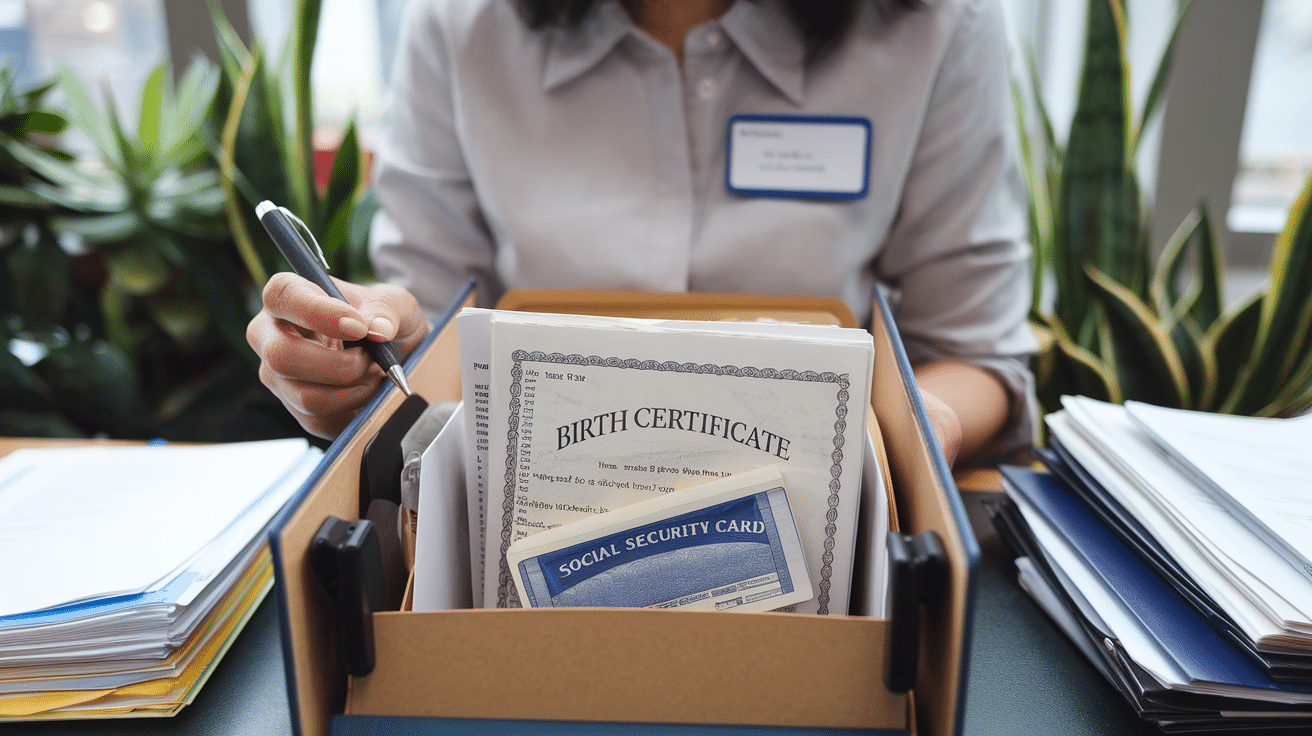Handling a child custody case requires strong documentation to support your case in court.
Most parents are unsure what details matter and how to gather proof that helps their case properly.
The good news? You can learn practical methods to collect and organize meaningful evidence that shows you’re acting in your child’s best interests.
This guide will walk you through some straightforward techniques to document important interactions, keep solid records, and compile evidence that carries weight in family court.
With these tips, you’ll feel more confident about presenting your case and protecting your relationship with your child.
Why Does Evidence in Child Custody Matter
- Evidence is Crucial: It helps judges make informed decisions about a child’s well-being.
- Clear, Factual Documentation: Shows how parents handle responsibilities and interact with their children.
- Evidence Tells a Story: It provides real examples of daily life, offering strong support when claims are disputed.
- Protects Against False Accusations: Detailed records, like pick-up/drop-off logs and witness statements, can address any custody schedule issues.
- Leads to Faster Resolutions: Strong evidence can speed up the process, saving time and legal costs.
- Courts Prioritize the Child’s Best Interest: The right evidence demonstrates how each parent supports the child’s physical, emotional, and educational needs.
- Consistency is Key: Consistent documentation over time shows the ongoing involvement of each parent in their child’s life.
- Helps Build Trust: Strong evidence builds trust with the court, demonstrating your commitment to the child’s well-being and reinforcing your role as a responsible parent.
Evidence Tips for Child Custody
Building a strong custody case requires detailed records and organized documentation. These tips will guide you in collecting and managing important evidence effectively.
1. Keep a Daily Communication Log

Text messages, emails, and phone calls can depict co-parenting efforts. Start a digital folder and save screenshots of conversations with dates and times.
Include notes about pick-up arrangements, schedule changes, and discussions about your child’s needs.
This log becomes valuable when showing consistent attempts at positive communication or documenting any concerning patterns.
Consider using specialized co-parenting apps that automatically store message histories in a format courts accept.
The key is maintaining regular entries without emotional commentary – stick to facts, times, and direct quotes.
2. Document Medical and School Records

School report cards, attendance records, and medical visit summaries are reliable proof of involvement in your child’s life.
Request copies of all school communications, including parent-teacher conference notes and activity participation forms.
Similarly, maintain a file of medical appointments, prescriptions, and treatment plans. These papers help demonstrate who handles healthcare decisions and stays involved in education.
Remember to organize everything by date and keep both digital and physical copies in a secure location.
3. Take Photos and Videos Wisely

Capture meaningful moments that show healthy parent-child interactions. Take pictures of daily routines such as homework time, family meals, and recreational activities.
Videos can demonstrate the living environment and your child’s comfort level in the home.
However, avoid staged scenes or anything that might make your child uncomfortable.
Focus on natural, candid moments that reflect normal life. Store media files with clear dates and brief descriptions of the context.
4. Maintain Financial Records

Create detailed spreadsheets of all child-related expenses. Save receipts for school supplies, clothing, medical costs, and extracurricular activities.
Include proof of child support payments made or received.
Bank statements showing regular purchases for your child’s needs can demonstrate financial responsibility.
Consider using expense-tracking apps specifically designed for co-parenting situations. Remember to note any shared expenses and how they were handled between both parents.
5. Track Calendar Events

Use a dedicated calendar for all custody-related events.
Mark visitation schedules, school activities, medical appointments, and extracurricular commitments. Note any schedule changes, including who requested them and why.
Document when each parent attends important events and any patterns of missed visits or late arrivals.
Digital calendars with sharing capabilities can help prove both parents had access to schedule information.
6. Gather Witness Statements

Connect with teachers, coaches, neighbors, and other adults who regularly interact with your child.
These individuals can provide written statements about their observations of your parenting and child’s well-being.
Ask them to focus on specific examples rather than general opinions. Make sure statements include contact information and are properly dated.
Keep the original copies and list potential witnesses who might speak in court.
7. Save Important Documents

Create a filing system for legal papers, including custody orders, court communications, and attorney correspondence.
Keep copies of your child’s birth certificate, social security card, and insurance information. Include any relevant police reports or official documentation of incidents that affect custody arrangements.
Store everything in a waterproof, fireproof container or secure digital vault with backup copies in a separate location.
8. Monitor Social Media Activity

Print or screenshot relevant social media posts that might impact custody decisions.
This includes posts about parenting time, lifestyle choices, or concerning behavior. Save any online communications through social platforms.
Remember to document both positive and concerning interactions. Set privacy settings appropriately and be mindful of your online presence during custody proceedings.
9. Record Living Conditions

Document the safety and stability of your home environment.
Take regular photos of your child’s living space, including their bedroom, play areas, and study space.
Keep maintenance records, rental agreements, or mortgage statements. Note any home improvements made to benefit your child.
Create an inventory of age-appropriate toys, books, and learning materials available to your child.
10. Track Transportation Details

Keep a log of all custody exchanges, including times, locations, and any issues that arise.
Save gas receipts and mileage records for custody-related travel. Document any transportation arrangements made between parents.
Note patterns of timeliness or tardiness during exchanges. Consider using location-sharing apps during custody transitions for added documentation.
11. Preserve Professional Evaluations

Save reports from counselors, therapists, or custody evaluators who work with your child.
Keep records of any parenting classes or counseling sessions you attend and document recommendations from professionals about custody arrangements.
Maintain contact information for all professionals involved in your case. These expert opinions can carry significant weight in court decisions.
12. Document Safety Concerns

Report any incidents that raise safety concerns immediately to the proper authorities.
Keep copies of police reports, protective orders, or official complaints. Save any evidence of unsafe conditions or concerning behavior.
Document attempts to address safety issues through proper channels. Remember to focus on facts rather than emotional reactions.
13. Create Behavior Logs

Note significant changes in your child’s behavior, especially around custody transitions.
Document sleep patterns, eating habits, and emotional states. Keep track of any concerning statements your child makes.
Record positive developments and achievements, too. Use factual, objective language when describing behavioral observations.
14. Store Electronic Evidence

Back up all digital evidence in multiple secure locations.
Save voicemails, video chats, and other electronic communications. Keep records of blocked calls or inappropriate contact attempts.
Use cloud storage with strong security measures. Remember to maintain original files without editing or alterations.
15. Track Parental Involvement

Document participation in school events, medical appointments, and extracurricular activities.
Keep records of time spent helping with homework or other educational support.
Note efforts to maintain relationships with extended family. Save evidence of attempts to involve the other parent in important decisions.
Remember to include both successful and unsuccessful attempts at co-parenting cooperation.
Conclusion
Building a case for child custody takes dedication and attention to detail. Each piece of evidence clearly shows daily parenting efforts and commitment to a child’s needs.
Starting with a simple communication log and moving through detailed records of:
- School, medical, and daily activities help create a strong foundation.
- Photos, videos, witness statements, and professional evaluations add depth to the story.
- Most importantly, staying focused on facts rather than emotions makes the evidence more helpful in court.
Remember that courts look at the complete picture when making decisions.
By following these tips and keeping organized records, parents can better show how they put their children’s interests first.
Frequently Asked Questions
What is the Biggest Mistake in a Custody Battle?
Speaking negatively about the other parent in front of children or on social media can seriously damage your custody case and hurt your child’s well-being.
Who Pays for Mediation in a Custody Battle?
Both parents usually split mediation costs equally. Some courts offer sliding-scale fees based on income; in some cases, free mediation services are available.
How to Win Custody Modification?
Show changes in circumstances affecting the child’s best interests, like unsafe living conditions or a parent’s relocation, and provide evidence supporting the need for change.








